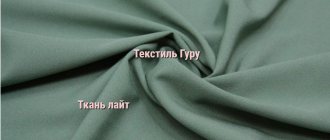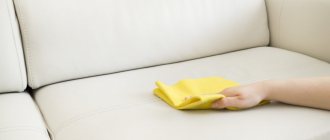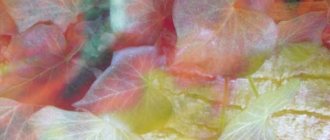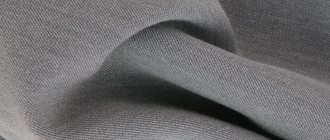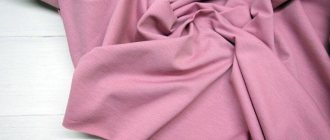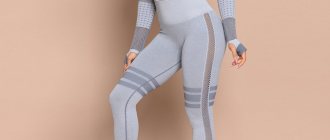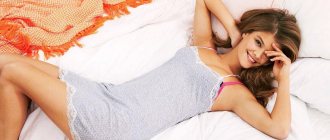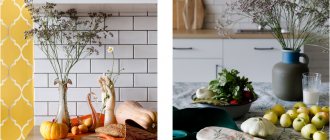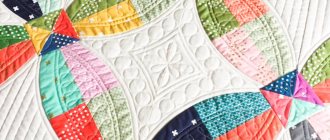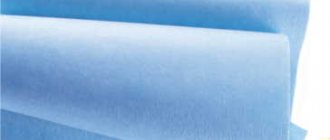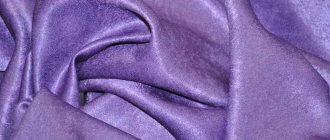Teak is a unique fabric from which durable and high-quality items are created. During its existence, it has managed to migrate several times from the section of very expensive and elite material to the group of the simplest and most accessible to ordinary people.
With the advent and development of new technologies, the cost of textiles has decreased significantly and today it is not difficult to purchase it. The prices are very affordable, and the material itself has received a wider range of uses.
What kind of light fabric is this?
Light fabric is a dependent type of fabric. This is the name given to materials that are less dense than the main type. For example, antistatic light fabric, Barbie light. Dress fabrics, technical fabrics, and furniture fabrics are also “lightweight”.
To understand what kind of fabric light is, you need to consider what material it is made from. General description of light fabric is a thin, light fabric of low density. The texture and properties may differ slightly from the base material. Thus, light teak is produced using a plain weave rather than a twill weave; its surface is smooth and non-relief. And the lightweight Barbie fabric, due to the cotton in its composition, wrinkles more than the classic version.
Reviews about light fabrics are mostly positive. Consumers note the high quality and hygiene of dress materials marked light. Clothes made from them are comfortable in the heat. The canvases are not inferior in strength and wear resistance to the main type.
conclusions
- Light is a general name for any kind of fabric with a lower density than usual.
- The composition of the material is different. This is usually a blend of natural and synthetic fibers.
- Loose weaving and the use of thin threads make the fabric soft and highly hygroscopic. Madapolam fabric is also hygroscopic and soft.
- Lightweight versions of fabrics of any type are produced: dress, bedding, technical, furniture.
- The most interesting are light special fabrics: they are strong and elastic like the original ones, but light and do not restrict movement.
Compound
The composition of light fabric can be either natural or mixed or synthetic. When it comes to dress fabrics, cotton, viscose or their combinations are most often used. A small amount of polyester or elastane fibers can be added to them (no more than 5-10%).
Technical “lightweight” textiles are predominantly synthetic. There are also mixed options in which cotton is added to polyester. But its percentage is less than 35-40%.
Upholstery materials of the light group are usually made from synthetic fibers. This provides them with strength and increased wear resistance.
What standards are used in manufacturing
The fabric manufacturing standards are prescribed in “GOST 7701-93 Cotton and mixed teak”.
Namely:
- linear dimensions and surface density - according to GOST 3811;
- number of threads per 10 cm - according to GOST 3812;
- breaking load - according to GOST 3813;
- change in dimensions after wet processing - according to GOST 8710;
- resistance to abrasion along the plane - according to GOST 18976;
- degree of whiteness - according to GOST 18054;
- mass fraction of chemical fibers for mixed teaks and degree of mercerization - according to GOST 25617;
- color fastness - according to GOST 9733.0;
- air permeability - according to GOST 12088.
In terms of artistic and aesthetic indicators, finished teaks must correspond to standard samples approved in accordance with the requirements of GOST 15.007.
Types and their properties
The characteristics of light fabrics are very diverse, depending on the lightweight version of which fabric they are. They produce knitted, stretch, and fire-resistant light fabrics.
“Lightweight” materials are conventionally divided into four groups. Dresses from which clothes are sewn. Furniture ones are suitable for upholstering sofas and armchairs. Technical workers are used to sew workwear and uniforms. The fourth group of fabrics is for sewing bed linen.
Let's look at a few representatives from the first group:
- barbie light . It is made from cotton with the addition of elastane. It holds its shape well, things do not deform when worn. It has good hygienic properties;
- Pandora light fabric . Suit material is crepe weave. It stretches well over both the warp and the weft and drapes well. It contains 95% polyester and 5% elastane;
- knitwear Roma light . This is a knitted blend fabric. It consists of viscose (60%), nylon (35%), elastane (5%). The textile is soft to the touch and stretches well. Clothes made from it do not deform when worn;
- light taffeta fabric . Thin synthetic fabric made of polyester and nylon. It is smooth and delicate, flowing. Linings for outerwear are sewn from it. After special water-repellent treatment, it is used to make advertising banners or awnings.
Light technical textiles are used for sewing workwear and outdoor advertising:
Varieties
Types are determined by two parameters. Firstly, the density of the fabric plays a big role, and secondly, the color. Two characteristics are enough to determine the subsequent scope of use. There are different directions, which will be discussed in more detail below. Find out about the description and characteristics of nylon fabric at this link.
Mattress (stuffed)
The highest strength teak is used to sew mattress covers. Does not lose its shape, retains its appearance perfectly and washes perfectly. It is worth noting that the material is quite rough.
Descriptions of the material Light
A lightweight version of teak fabric, which is used for sewing summer clothes. Another variety is satori light, to which mixed fiber is added. Very light, soft, pleasant to the touch and completely natural.
Premium for fashion tailoring
It has a medium density and is suitable for sewing clothes, bed linen, and curtains.
This fabric usually costs more than others.
Pillowcase (bedsheet for pillows)
Classic, having a low density, and therefore characterized by softness. It holds feathers and down well, which is why it is called down-holding textiles. This material will tell you about pillows for garden swings.
Curtain
Teak, low density and bright colors is used for sewing ordinary curtains. The fabric is natural, so it retains its quality for a long time, but also requires special care.
Application area
Light group materials are widely used. They are used for sewing clothes: dresses, blouses, trousers. These are mainly summer models.
Light fabrics are suitable for sewing wedding and evening dresses. Flowing, well-draped materials are used for them.
For light evening dresses, fabrics are combined with lace or leather. The Genevieve dress model looks impressive with a belt made of Dior light jersey with an openwork insert.
They make suits from fabrics (satori) for workers in food production and housing and communal services. Surgical gowns are made from light materials, for example, the classic gown in blue.
Sofas, armchairs, chairs, poufs are upholstered with light fabrics. Some varieties, for example, satin, are used to make curtains for offices or government agencies.
Ironing
If we consider the question of how to iron light fabric, then everything also depends on the material that served as its basis. Fabrics based on natural fibers can be ironed at higher temperatures, while products based on artificial fibers require lower processing temperatures.
Light fabric is often used to make items to be worn in the warm season, so it is predominantly of natural origin. Strong fibers expand well under the influence of temperature.
The most correct decision when choosing an ironing mode for a product is to act in accordance with the information indicated on the label. If there is none, then based on the composition of the fabric and its properties, you can independently select the ironing mode, knowing about the characteristics of the material. You should choose a temperature that is not too high, and if you cannot achieve the desired smoothness, then gradually increase it.
It is better to iron from the wrong side.
When ironing from the front, it would be more correct to lay cotton fabric or a special mesh; it is allowed to use a damp cloth or gauze to help. The iron should not be left on certain areas of the product for a long time to avoid deformation.
Light is not a designation for any specific material, but rather an adjective that emphasizes the properties of the fabric. Compared to the standard version, light textiles have a lower density, weigh less and are intended for summer clothing.
The composition of the fabric is different, as it is a lightweight version of the basic fabric. Less density and greater lightness are achieved through weaving and the use of thinner threads.
Care
Caring for products made from light materials will depend on the composition; carefully read the tag on the clothing. In general, dress materials can be washed at 30°C by hand or on a delicate cycle in a washing machine. If necessary, iron clothes from the wrong side with a non-hot iron.
Dear readers of the Tkan.Club website, if you still have questions on this topic, we will be happy to answer them. Leave your reviews, comments, share stories if you have dealt with this material! Your life experience may be useful to other readers.
Origin story
This dense and durable fabric has been known since the Middle Ages. It was used to make durable and inexpensive clothing for the poor. And for noble ladies, she sewed corsets and even shoes - fabric shoes. The second lesser-known name for this fabric is coutil, which is translated from French as “mattress”.
In Russia, this fabric was called “trapeza”: after the surname of the Zatrapeznov merchants, the founders of the linen manufactory in Yaroslavl at the beginning of the 18th century. It was used to make work suits and simple household items: rough shirts and trousers.
Panel curtains
Panel curtains made of punta fabric have a number of advantages: they are easy to manage, they can cover large spaces, and the fabric is easy to care for (clean with a vacuum cleaner). Installation is also simple, but it is better to entrust it to specialists. Punta fabric is wear-resistant and has a long service life. This material is also used in the manufacture of pillows. Such products are environmentally friendly and do not cause allergic reactions. These pillows are comfortable to sleep on. Due to the fact that the material is not dense and allows air to pass through well, a person does not sweat. The appearance of parasites is completely excluded. Caring for your pillows is simple: fluff them up every day and try to ventilate them in the fresh air as often as possible.
